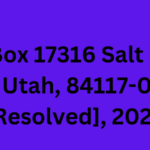In the dynamic realm of online platforms, membership sites have surged in popularity, serving as virtual hubs where like-minded individuals come together to connect and share their passions. Whether it’s a site dedicated to hobbyists, professionals, or enthusiasts, the success of any membership site hinges on its ability to foster a safe, inclusive, and community-driven environment. A pivotal tool in achieving this is the establishment of clear and comprehensive community guidelines.
When thoughtfully crafted and diligently enforced, these guidelines create a nurturing atmosphere where members feel valued, supported, and empowered to engage actively. This blog post will delve into the significance of community guidelines for membership website development and provide valuable insights on creating a welcoming digital space.
The Significance of Community Guidelines
Community guidelines serve as a roadmap for members by outlining expected behaviors, values, and norms within the community. By setting expectations from the start, these guidelines ensure that all members feel secure, respected, and included. Moreover, they help minimize conflicts while providing a framework for resolving disputes. Crafted guidelines foster a sense of belonging among members by encouraging participation and cultivating a positive atmosphere throughout the community.
Developing Comprehensive Guidelines
Creating an environment that effectively prioritizes member safety and well-being requires creating guidelines covering behaviors and scenarios.
When crafting community guidelines, it’s essential to keep in mind the following points:
1. Respect: Emphasize respecting all members regardless of their background, opinions, or beliefs. Encourage constructive conversations while discouraging attacks hate speech, or bullying.
2. Inclusivity: Highlight the value of inclusivity and diversity within the community. Encourage members to be mindful of their words and actions to ensure everyone feels welcome and included.
3. Privacy: Stress the importance of maintaining members’ privacy and confidentiality. Prohibit the sharing of information without consent. Establish guidelines for handling sensitive or confidential discussions.
4. Content Guidelines: Specify what types of content are allowed and prohibited within the community. This can include guidelines regarding copyrighted material, spam, self-promotion, and offensive content.
5. Moderation Policies: Clearly outline the consequences for violating community guidelines, such as warnings, temporary suspension, or permanent bans. It is also essential to establish procedures for reporting and addressing violations.
6. Engaging Members in Rule-Making Process: To ensure participation and buy-in from members, involve them in creating community guidelines. Seek their input through surveys, polls, or open discussions to understand their expectations and concerns. By involving community members in creating rules, you foster a sense of ownership and encourage accountability within the community.
7. Consistent Enforcement and Transparency: Ensure community guidelines are consistently and promptly enforced. Treat all members equally, avoiding any appearance of favoritism or bias. It’s essential to communicate any rule changes or updates to members in a manner that maintains transparency throughout the enforcement process. When addressing violations or disputes, maintain confidentiality while explaining decisions made.
8. Encouraging Positive Participation: Creating a space relies on positive participation from all members. Encourage contributions to discussions, valuable insights sharing, and mutual support among members. Offer guidance on how to engage in conversations, ask questions, and provide feedback. Appreciate those who consistently uphold the community values and guidelines.
9. Community Moderation and Reporting Mechanisms: To actively maintain an environment that empowers community members to comply with established guidelines. Establish reporting mechanisms for individuals to report conduct or content within the community. Consider appointing trusted members as community moderators who can assist in enforcing guidelines and addressing violations effectively. Provide guidelines and resources for reporting procedures to ensure that every member feels supported and heard.
10. Regular Communication and Updates: Keep all community members informed about any updates or changes to the community guidelines. Keep in touch with members through newsletters, announcements, or forums. This will remind them about the guidelines and address any questions or concerns. It’s also essential to gather feedback from members occasionally to evaluate how practical the community guidelines are and make any adjustments.
Careful planning, clear guidelines, and consistent enforcement are critical when creating an environment within a membership site. In the process, you can nurture a secure community by prioritizing respect, inclusivity, and privacy while actively involving members. Remember that community guidelines are not set in stone but an evolving document that should adapt as the community grows and changes. Regularly. Modify your guidelines to meet the changing needs of your membership site community.








